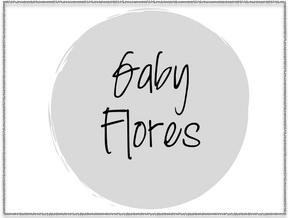If there’s a drink I might never be able to recreate is the Chicha de Arroz. Chicha is a very sweet and very creamy drink made out of rice. It can be made at home or can be found in supermarkets. But the best was the one you could get in the street. The one I particularly remember is the one I would get in Villa de Cura. Chicha de Arroz was sold out of a cart found in one of the corners in the Centre of town.
El Chichero – name of the person making and selling chicha – would sit at his cart all day under an umbrella and in the cart there would be two big jags. In one was a type of loose paste made from the rice, sugar and water. In the other jag was the ice. El Chichero would ladle a bit of the paste onto the ice and add some milk to dissolve it. That would create a creamy liquidy texture. To serve it, el Chichero would fill up half a cup, squirt some condense milk on top that half and then add another layer of chicha. He then would finish it off with some more condense milk and sprinkle some cinnamon.
It was a spectacle to watch El Chichero prepare and serve Chicha. The Chicha would fly from the ladle to the cup, the ice would make the perfect refreshing sound and the squeeze bottle with condense milk would pour just the right amount to sit of top of the chicha.
Because we would be visiting Villa de Cura only on the weekends, Chicha was a must stop at some point. It was part of the adventure of going ‘downtown’ which was really only 4 or 5 blocks away from Lela’s house and a few blocks from the main square. But the streets of the centre of town were filled with stores, such as the bookstore where I would get stock up with erasers for my collection. Or a huge department store where my mom would get us pjs or socks. Shoes stores, pharmacies, etc.
Another great memory from the streets of Villa de Cura was the cart selling Raspao or Raspado. Raspao –Snow Cones – comes from the verb raspar, which means to shave. Raspao is ice shaved into a ball and flavored with a very colourful sweet syrup of your choice.
The coolest thing about the raspao was the machine used to shave or crush the ice. It was this huge iron structure that sat on top of a cart. A huge chunk of ice would be placed between the base of the structure and the crushing part. With a hand wheel -found on the side of the machine – you would wheel fast and with lots of strength to lower the top crushing piece onto the chunk of ice that in circular motion would shave the ice. Then you could add any flavour you wanted: tamarind, passion fruit, watermelon, lemon, strawberry, etc, and on top you couldn’t forget to add condense milk.
Another street spectacle was the hot dogs, burgers and parrilla. Hot dogs and burgers were not just any hot dogs and burgers. Yes they had buns and winners or patties but what was incredible was what you added to them.
To the hot dogs, I would add crushed potato chips, onions, cabbage, salsa rosada (ketchup + mayonnaise), garlic sauce, mustard, parmesan cheese.
To the burgers, I would add, ham, cheese, fried egg, crushed potato chips, onions, cabbage, salsa rosada (ketchup + mayonnaise), garlic sauce, mustard.
Usually hot dog and Burger would be sold out of two different carts. In some places you would have all carts together – such as food trucks – and people would refer to those places as ‘la calle del hambre’ – the hunger street.
The parrillas sold in the carts were different to the barbeques at home. They would grill the meat, cut it into pieces and put it on a bed of chopped bollitos – the dough of the arepa made into a cylinder form and boiled. On top I would squirt some ketchup. You would eat this with toothpicks trying to catch one piece of meat and one piece of bollito in one toothpick.

 Gabriela Flores is a culinary nutritional expert, food coach and a wellness enthusiast. She’s the co-founder and kitchen goddess at Bliss B4 Laundry: Inspirational Events for Mind, Body, and Soul. She’s made it a mission to find ways to transform the human body from deprivation to abundance. Her passion is food: to get in the kitchen and experiment with new ingredients to make them delicious, nourishing and extract their power to heal.
Gabriela Flores is a culinary nutritional expert, food coach and a wellness enthusiast. She’s the co-founder and kitchen goddess at Bliss B4 Laundry: Inspirational Events for Mind, Body, and Soul. She’s made it a mission to find ways to transform the human body from deprivation to abundance. Her passion is food: to get in the kitchen and experiment with new ingredients to make them delicious, nourishing and extract their power to heal.